It’s been a long hiatus since the last post. The blog is still back in Alaska, but I’m writing this entry on the beach in the shade of a palapa many thousand kilometers south of there. The difference in settings is striking. We’re currently staying at Stoners Surf Camp in San Blas, Mexico on the recommendation of our good friend Andrew Derbitsky. It’s exactly what we need after covering a lot of kilometers through heat and humidity like I’ve never seen before. As we travel south we face a whole new set of challenges, very different from the ones we found in the north, and much less familiar. But before we write about our adventures in the south we must wrap up our adventures to the north. Our last post leaves us back at our first camp in Alaska’s Wrangell St. Elias Wilderness after being unable to find a way across the Kennicott Glacier on our first day. Tomorrow’s a new day though, and we’re ready to give it another shot.
The next morning brought favourable weather. The clouds cleared quickly and we were treated to more spectacular views. We were actually thankful that we were going to get to enjoy another beautiful day on the most impressive part of the glacier. After packing up camp we made our way down the moraine and onto the glacier, moving much faster this time as we picked a better route on our second try. The previous day I had more or less disregarded the suggested route map that the guiding outfit had sold us, but after being turned back I carefully entered the 4 waypoint coordinates into the GPS. The text was hard to read but the points seemed to jive with the GPS topo map so I was pretty sure I had it right. Instead of heading straight out onto the ice we stuck close to the moraine and walked the edge of the glacier. Keeping a watch full eye for rock fall from the moraine above we made good progress down glacier. In this zone we could really feel the transience of the glacier. Water was flowing everywhere and rocks were constantly falling off the moraine and the glacier as the ice melted. As glacial ice moves it flows and deforms plastically, like silly putty, until the strain becomes too great and then it yields (Like when you pull silly putty apart really fast and it shears apart, leaving you with two flat surfaces). In ice this produces booming cracking sounds that we heard intermittently.
The features of a glacier are determined by the topography of the land below it. When a glaciers flows through a dip or low point the ice is forced into compression, thereby closing crevasses and forming an ideal path for walking. Conversely, if the glacier flows over a hill or a protrusion it puts the ice into tension, thereby opening crevasses and making travel challenging. This was the condition that made the last day’s route impassable. Moving along the edge of the glacier we were able to quickly get past the heavily crevassed region that stopped us the day before, moving down glacier until we found more favourable ice. Consulting the GPS we took a bearing to the next waypoint located mid glacier and struck out onto the ice. From here we made steady progress over challenging, but passable terrain. We stopped on a moraine mid glacier and treated ourselves to a well-deserved lunch of sausage and dried apple wraps, wasabi peas and chocolate.
The distance across the glacier to the second campsite was about 3.5 miles as the crow flies. It took 10 hours to cross. There are 4 moraines mid glacier to get passed and constant navigational problem solving is required as crevasses are encountered. After crossing both the Kennecott and the Gates glaciers we negotiated about 400 meters (felt like 4 kms) of gnarly finned moraine to finally bring us to a spectacular campsite above. It was both exhausting and deeply satisfying to overcome the challenge that had turned us back the day before.
Having crossed the Kenniccott and Gates Glaciers we had completed the crux of the trip, but we were still two days trek away from McCarthy. On the third day we crossed the moraine again and worked our way onto the “Kennecott Highway”, a long flat section of the Kennecott glacier that, in the words of a local guide, you could pretty much ride a bike on. It wasn’t an exaggeration. We made fast progress down glacier along flat ice before cutting east to Donaho Basin, a lush oasis of green in a world of rock and ice.
The glacier is a land of extremes. The travel is often hard and temperatures fluctuate greatly. You might be freezing cold one minute, chilled by katabatic winds sweeping down the glacier, and then sweating buckets the next as you cross a moraine where the black rocks intensely radiate the heat absorbed from sun. The glacier is also largely devoid of life. Bears roam there, but we didn’t see them. There was little plant life that I could see.
After two days of walking on ice and rock it was revitalizing just to be around plants, and birds and dirt and lakes. It brought a few things into sharp focus for me. Firstly, just as in the mountainous alpine, we can only really be guests on the glacier. Temporary visitors. Just passing through. And secondly, traveling for days in an environment that is absolutely spectacular, but also quite sterile gave me a renewed appreciation for the connection that I feel with our fellow inhabitants, plants and animals alike, here on earth. The wealth of our planet lies in nature’s biodiversity. As inhabitants of this pale blue dot, as Carl Sagan so aptly put it, the wealth of our race is derived from the same, not from dollars and cents. It is a resource we should guard and cherish because, for the foreseeable future, we have nowhere else to go. Admittedly I could do without the swarms of mosquitoes and black flies, but I guess you can’t win ‘em all.
We greatly enjoyed our last night of the trek camped out at Donaho Basin. In the morning we somewhat reluctantly packed our gear and made for McCarthy. The hike through Donaho Basin was beautiful, but not without some decent bush wacking (We didn’t do a single hike in Alaska that didn’t involve at least some bush wacking). For the last time we donned crampons and crossed the Root glacier where throngs of tourists on guided glacier walks promptly surrounded us. It was a bit of a shock to the system, as we hadn’t seen a soul in over three days. We trudged through the beautiful old mining town of Kennicott but didn’t have the energy to stop and look around. We had a burger in town and made for the camper. Jessa’s first backpacking trip, and one of the finest I have ever been on, was a great success. That night we slept like logs.
T



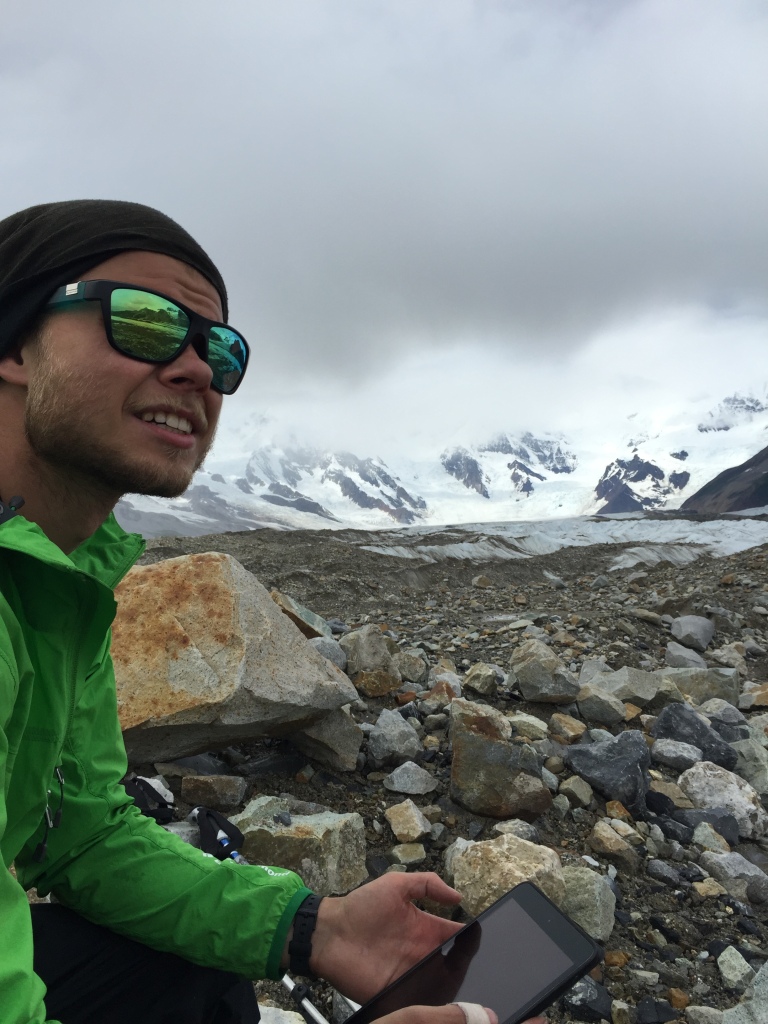


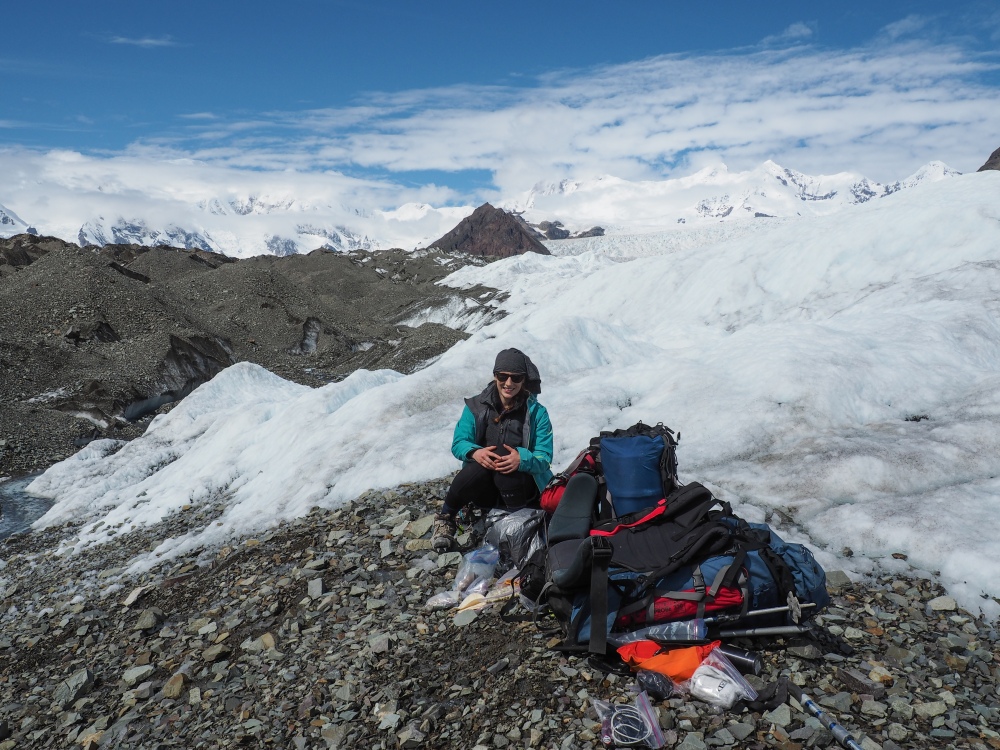


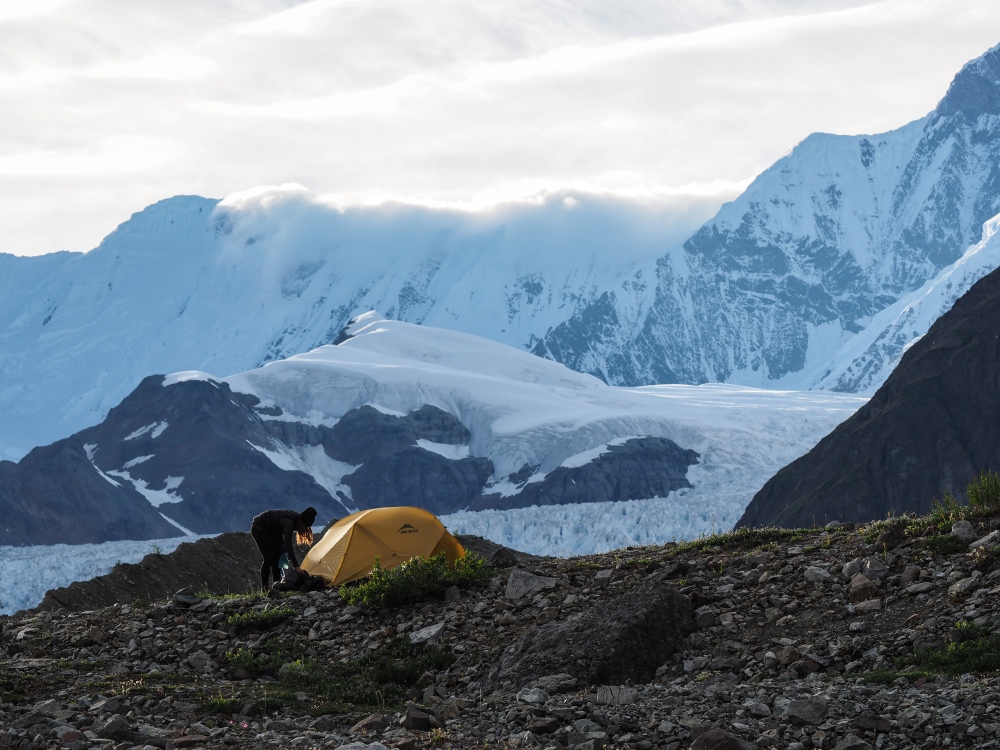
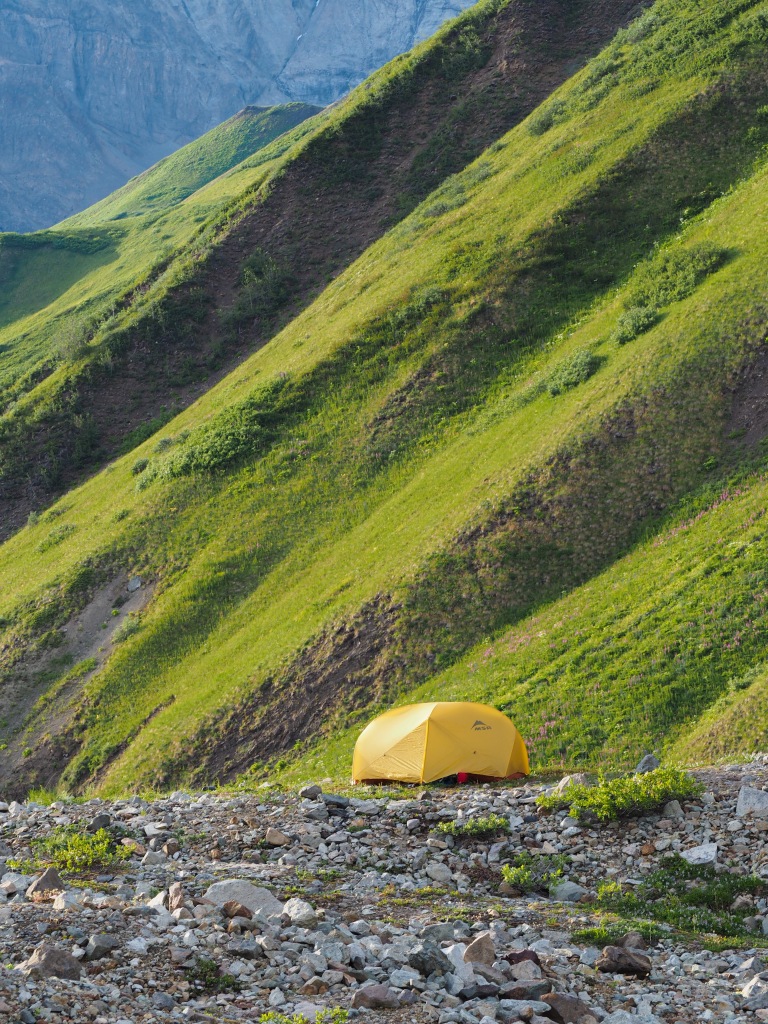

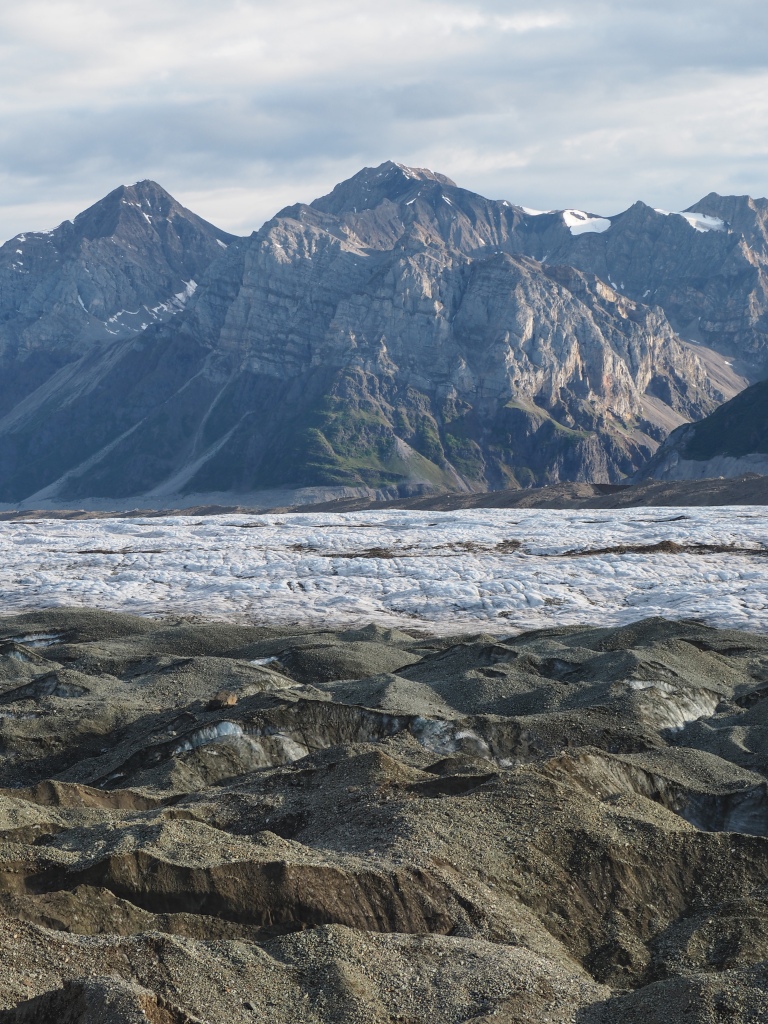

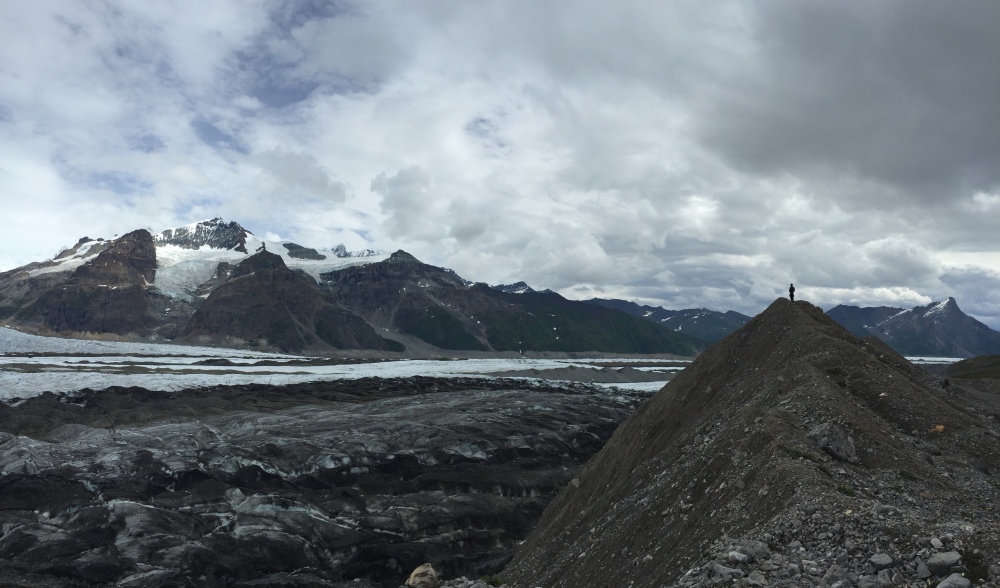
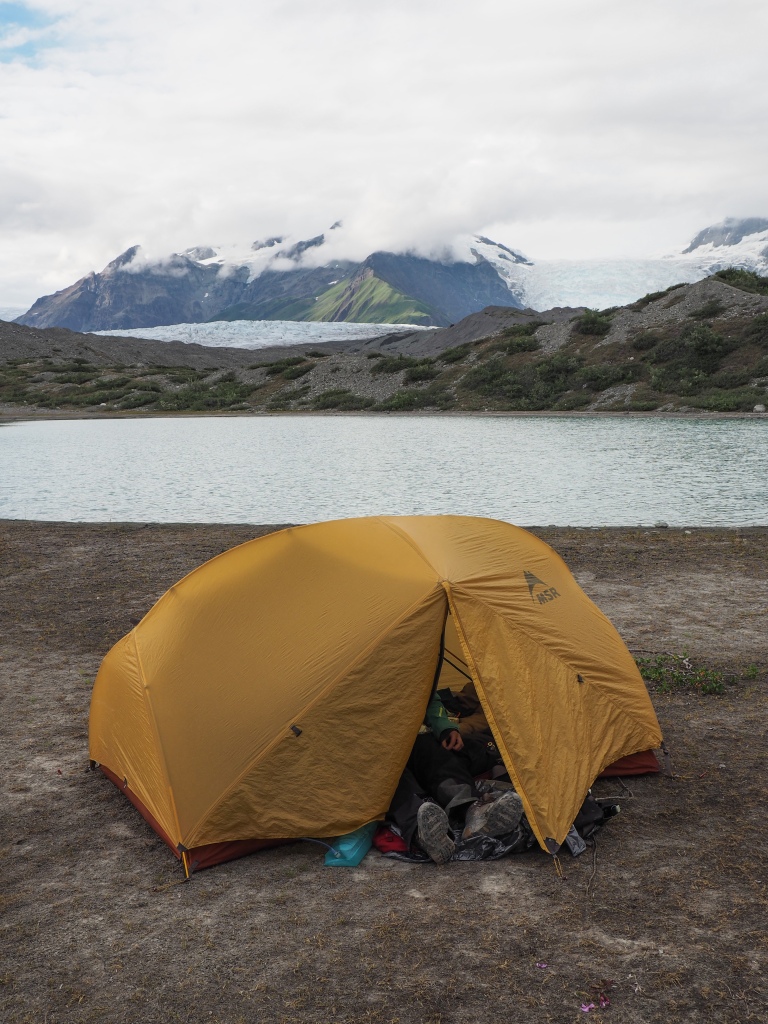






What a special place and experience!!! Great photos. Love the contrast between the ice and the grass. Thanks for sharing. Looking forward to Mexico stories……
LikeLike
Nice boogers, Tom
LikeLike
Suggest you read Kim Kardashian’s blog instead if your looking for something more “air brushed”
LikeLike
Omg Thomas ! Great pictures
Happy to hear you are taking it all in! Traveling is by far the best way to discover our true self!
LikeLike